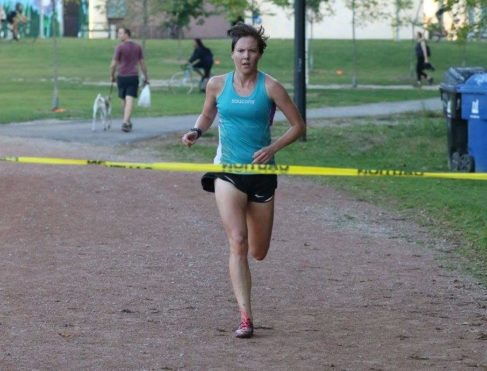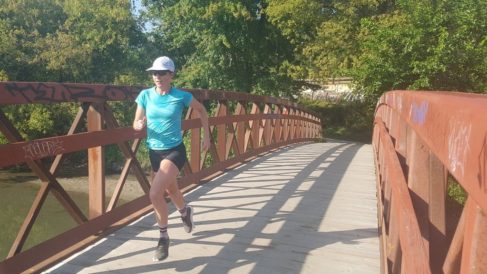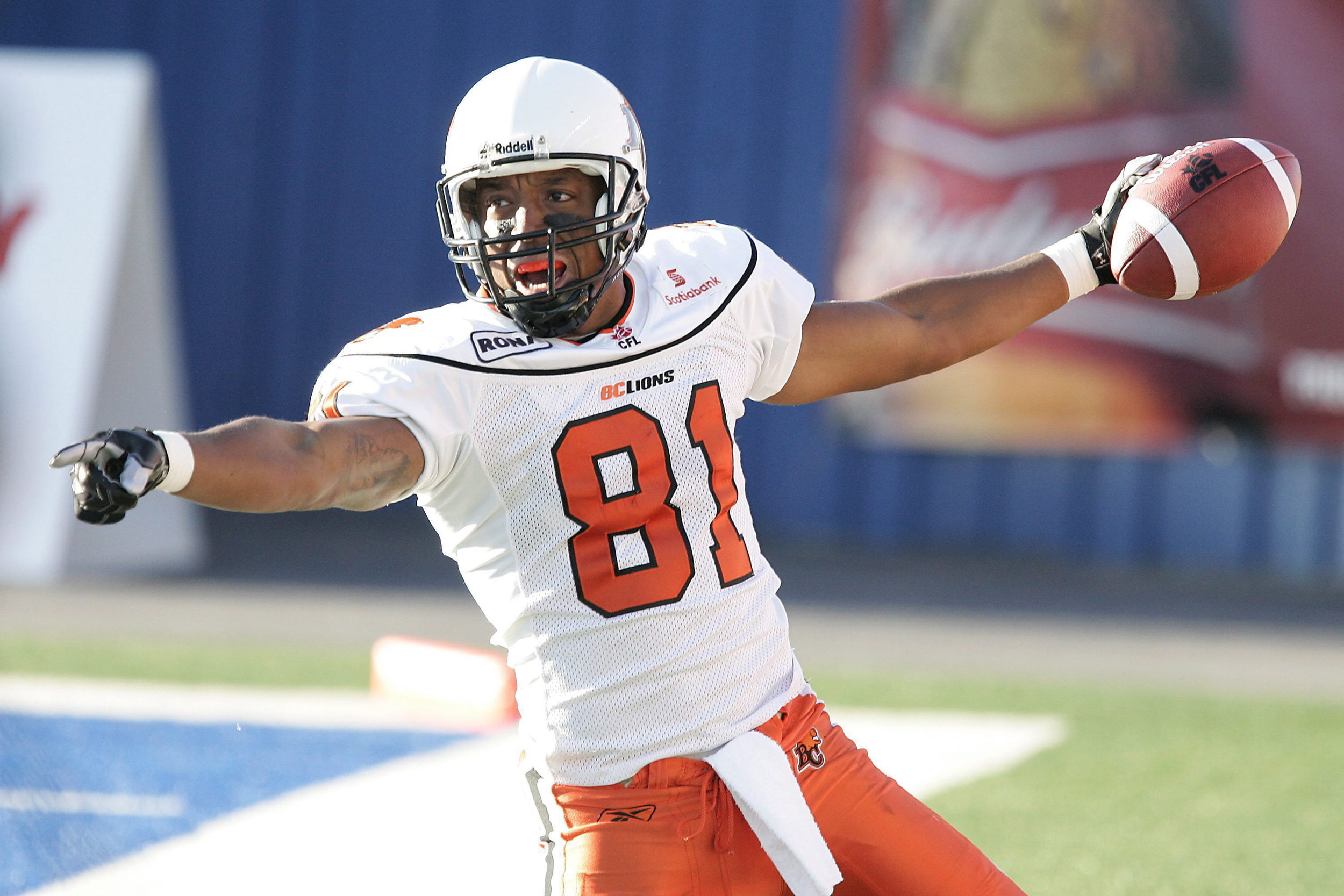Krista DuChene talks to Andre De Grasse about heroism, expectations, giving back to the community, and following in the massive footsteps of Usain Bolt
When iRun editor Ben Kaplan asked if I wanted to interview Andre De Grasse and fellow sprinters Brendon Rodney, Aaron Brown, and Akeem Haynes for the upcoming cover story, I thought it was a better job for someone else. I doubted I would feel a connection that would assist me in writing a decent story. He’s a young, single man who sprints in seconds down the track and wins World Championship and Olympic medals. I’m an old, married woman who paces for hours around roads and DNF (did not finish) at the World Championships and placed 35th at the Olympics.
When we first sat down, it was no surprise that they did not know who I was—and to be honest, I didn’t know much about them. Andre concluded that I competed at the Rio Olympics by recognizing my red sparkly earrings that were given to the women on the team. Brendon Rodney clarified that it was 2016, likely thinking I competed long before his time. It didn’t bother me. I told them I was the oldest athlete on the team and likely the only one plucking gray hairs before walking in the Closing Ceremony. It was clear that our worlds were pretty far apart, but we shared a few laughs and they happily signed my kids’ Rio hats around numerous other Olympians’ autographs. We seemed to take a genuine interest in and share a mutual respect for each other. They were fairly astonished to learn that I ran my Olympic standard less than a year after fracturing my femur while competing with three young children at home. Everyone seemed relaxed and ready to answer some of the questions I had prepared, which is when I was pleased I decided to take advantage of the opportunity. Not only was it something new, but also a contribution to a very worthy cause.
Andre and his teammates are participating in the Roche Fight Idiopathic Pulmonary Fibrosis (IPF) Six-Minute Marathon. They won’t be completing a full 42.2 km, something they admitted they could not fathom. In fact, Andre recalled being amazed at how many laps were in the steeplechase, something he learned when rooming with one of Canada’s best at a Diamond League event. Akeem Haynes was the only one with bragging rights for completing a full mile. Instead, they will travel across Canada to do a series of six-minute walks, because for those living with IPF, a rare but fatal lung condition, a six-minute walk can feel like a marathon. The men explained that they felt drawn to help Canadians fight IPF because, as runners, they appreciate their every breath.
“We did this because we have a good fit with it, knowing how essential it is to breathe, how important, especially in our sport,” said Aaron Brown. Andre added that IPF is a relatively unknown disease with no cure. As a team who has faced challenges, they appreciate the value of a strong support system. Using their platform and experience, they explained that they can encourage those living with IPF to also rely on their family, friends, and team of professionals. A strong support system is integral to better manage the disease and stay active longer for the nearly 30,000 Canadians who may be affected by IPF, which causes irreversible and worsening scarring of the lungs and deprivation of oxygen to the body. It is responsible for an estimated 5,000 deaths per year.
As I continued to learn more about the lung disease, I also got to know more about the four men. It was only last month that Andre had to withdraw from the World Championships due to an injury sustained just before his final opportunity to race against the soon-to-be-retiring Usain Bolt. It was a showdown that left many wondering what might have been. When asked how this lost opportunity changed him, particularly as he stuck around and watched the races unfold, his answer was honest and simple: “It was a humbling experience for myself and the team around me,” De Grasse said. “I think moving forward we have to learn from that and get better for next year. A lot of things I could’ve done better that I didn’t do to prevent the injury. I need to find balance and not lose that structure so that I can be successful in the future.”
For a 22-year-old man, Canada’s biggest name in athletics, and owner of a hefty Puma contract, he clearly understands his role and high expectations. When asked about the unending comparisons to Jamaica’s Usain Bolt, he gave him credit. “Usain has done a lot for the sport and for me. I’m in a unique situation. We’re part of the same company and we work together and now it’s a new chapter,” he said. “I have to try to fill the void for Puma and for racing, because he’s retiring and he’s a great athlete who gives me a lot of advice going forward of what I need to do to be successful and I’m trying to take all of that and try to go out there. I am trying to become one of the fastest men in the world.”
As we continued our conversation, with De Grasse remaining humble and open to any topic of conversation, I commended him for his financial responsibility. I told him that I remembered discussing with my own children his choice to purchase a Honda Accord above anything else when the terms of his deal with Puma were first announced.
“I’m not the type of person to be materialistic,” he said. “None of that stuff fazed me to buy an expensive car. For me, it’s not a big deal. After my career is over and I have forty or fifty years to live still, hopefully more—knock on wood—I have to know when to budget and how to spend my money wisely. That’s important to me.”
As our time neared an end with some rapid fire questions, I was feeling pleased that I decided to take on this challenge after all. As some of you know, I’m not one to walk away from a challenge and it’s good to meet other runners. Whether it’s a sprinter or a marathoner, a 5K participant or someone raising money for charity at a massive 10K, all of us runners, in some sense, all have to do the same thing. We all lace up our shoes and go out there. It’s clear that these men are enjoying their sport, taking their roles seriously, giving back while they have the platform to do so, and preparing for a lifetime afterwards. As Andre summarized, “Using our platform is important to us as a team. We want to help because we know that we can.”
Andre, and the rest of you guys, that’s right—you absolutely can. And, what’s more, you are.
For more information about Idiopathic Pulmonary Fibrosis and the Fight IPF community, please see FightIPF.ca.














 Our Magazine
Our Magazine Previous Release
Previous Release
